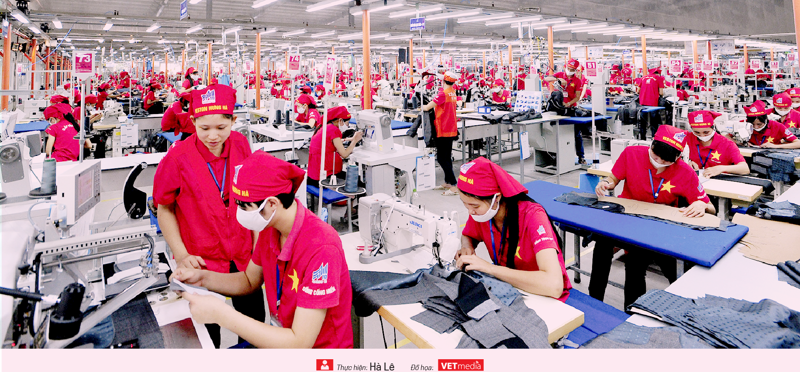Vietnam’s labor market has been assessed as developing well over recent years, but was affected by many issues after Covid-19. What were the impacts?
Vietnam’s labor market has developed since 1986 and seen comprehensive development over recent years. Firstly, the legal system was completed, creating a legal corridor to develop the labor market. Secondly, the scale and quality of labor supply and demand have gradually expanded and employment quality has improved. Thirdly, we have gradually formalized part of the informal sector, and the labor structure has shifted positively towards reducing the rate of agricultural workers while increasing the rate of workers in industry and services. Fourthly, salaries have increased and workplace competitiveness improved.
However, the country’s labor market has been affected by Covid-19, Industry 4.0, and digital transformation.
Industry 4.0 has raised new issues. Many jobs and skills will disappear or decline while new jobs and skills will appear. Artificial intelligence (AI), robotics, and machinery will play a greater role in the production process and will replace many existing jobs. Compared with developed countries in the region and the world, Vietnam has a modest rate of trained workers, at 26.2 per cent, which presents a major challenge in improving productivity. Meanwhile, in the context of international integration, the market allows the moving of workers between countries, and Vietnamese workers need to abide by the “common rules of the game” if they want to work in other countries.
Vietnam has attracted large volumes of FDI in recent years, contributing to economic growth and generating direct jobs for 4.6 million workers, or 7 per cent of the total workforce, and millions of indirect jobs. However, FDI businesses seek high-quality human resources to apply high technology and improve productivity. If it fails to meet such requirements, Vietnam will find it hard to attract FDI.
What shortcomings and weaknesses were seen in Vietnam’s labor market in recent times?
Covid-19, which was unprecedented, coupled with the impact of Industry 4.0 and digital transformation, revealed certain shortcomings.
Firstly, labor supply and demand failed to meet the standard of a modern, flexible, sustainable, and integrated labor market. The number of skilled workers remains limited and workplace quality has failed to meet requirements. There are insufficient stable jobs to meet employment demand, which is clearly shown through the high rate of workers in the agriculture, forestry, and fishery sector and the low rate in the industrial sector.
Secondly, in general, the labor market sees unequal development. There is still an imbalance in supply and demand between regions and economic sectors.
Thirdly, labor market administration is limited, leading to ineffective forecasting and analyses on labor trends.
Fourthly, the social security system is developed but not sustainable, failing to prevent risks facing workers.
Which measures will the Ministry of Labor, Invalids and Social Affairs deal with in 2023 and subsequent years?
Our overarching goal is to invest in people, develop high-quality human resources, and develop a flexible, modern, sustainable and integrated labor market, including effective labor supply and demand. Initially, in 2023, the Ministry will continue adopting measures to ensure the supply of human resources in line with the demand of businesses and the market.
In particular, it is necessary to assess the human resources needs of foreign investors in Vietnam, invest in improving the capacity of vocational training, particularly high-quality human resources training, and take measures to deal with the shortage of human resources for some sectors and reduce imbalances in labor supply and demand.
In order to develop a flexible, modern, sustainable, and integrated labor market, it is essential to carry out fundamental and long-term groups of solutions, as follows:
Firstly, continuing to complete mechanisms, policies, and laws to help the labor market develop flexibly and effectively; to internalize and specifically regulate labor standards in line with conditions in Vietnam and international standards and conventions from the International Labor Organization (ILO) and new-generation free trade agreements (FTAs) Vietnam has ratified; to improve the efficiency of organizing and managing the labor market; and to focus on developing the labor market and providing new skills and connecting labor supply and demand towards green and sustainable employment.
Secondly, ensuring the rights of workers at the workplace and promoting sustainable and high-income employment; and investing in labor supply and demand forecasting and developing labor market information systems.
Thirdly, supporting the development of social security and insurance by providing free information and legal consultancy services to workers; and helping workers join domestic and foreign labor markets.









 Google translate
Google translate